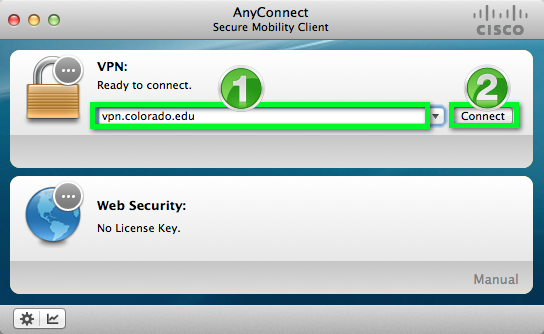Cisco Anyconnect For Mac High Sierra Download
Cisco AnyConnect is the recommended VPN client for Mac. The built-in VPN client for Mac is another option but is more likely to suffer from disconnects.
Overview
I understand that. We have already tested AnyConnect 4.6 with the 4.3 compliance module on High Sierra and do not have any issues. After working with TAC they couldn't give me a timeline as to when the posture feed will be updated with support of 10.14. Cisco AnyConnect can be found in the Cisco folder located in the Applications folder (/Applications/Cisco/). Navigate to /Applications/Cisco/ and open 'Cisco AnyConnect Secure Mobility Client'. To authenticate with Duo, enter vpn.mit.edu/duo and click the button labeled Connect. Enter your MIT username and password then click the button labeled OK.

Cisco Anyconnect Download Free
Stanford's VPN allows you to connect to Stanford's network as if you were on campus, making access to restricted services possible. To connect to the VPN from your Mac you need to install the Cisco AnyConnect VPN client. Roxio toast 10 titanium for mac free download free.
Download Cisco AnyConnect VPN for Mac OS X, El Capitan, Sierra, High Sierra, Mojave. First of all download the Cisco AnyConnect VPN client for Mac from the official website. Once downloaded find and open the file. Now open the file named “anyconnect-macosx-XXXXXX” from the list.
Cisco Anyconnect Vpn For Mac Download
Two types of VPN are available:
Cisco Anyconnect Mac Os X
How to Use AnyConnect VPN Mac. Step 1: Download & Install. If you run macOS High Sierra, follow these additional steps to allow the Cisco software kernel extension and to complete the installation. Download the Cisco AnyConnect VPN client. Aug 18, 2017 Deploy a Quick VPN Alternative for Mac OS Note: The VPN Client to Gateway configuration of the device needs to be done first. To know more how to configure VPN Client to Gateway refer to Set Up a Remote Access Tunnel (Client to Gateway) for VPN Clients on RV016, RV042, RV042G and RV082 VPN Routers. Cisco AnyConnect is the recommended VPN client for Mac. The built-in VPN client for Mac is another option but is more likely to suffer from disconnects. Overview Stanford's VPN allows you to connect to Stanford's network as if you were on campus, making access to restricted services possible.
- Default Stanford (split-tunnel). When using Stanford's VPN from home, we generally recommend using the Default Stanford split-tunnel VPN. This routes and encrypts all traffic going to Stanford sites and systems through the Stanford network as if you were on campus. All non-Stanford traffic proceeds to its destination directly.
- Full Traffic (non-split-tunnel). This encrypts all internet traffic from your computer but may inadvertently block you from using resources on your local network, such as a networked printer at home. If you are traveling or using wi-fi in an untrusted location like a coffee shop or hotel, you may wish to encrypt all of your internet traffic through the Full Traffic non-split-tunnel VPN to provide an additional layer of security.
You can select the type of VPN you want to use each time you connect.
Install the VPN client
- Download the Cisco AnyConnect installer for Mac.
- Double-click the InstallAnyConnect.pkg file to start the Cisco AnyConnect Installer wizard.
- When the Welcome window displays, click Continue.
- Select your hard drive as the destination where you want to install Cisco AnyConnect and then click Continue.
- Click Install to perform a standard installation of the software.
- At the prompt, enter your administrator account password for the Mac and click Install Software.
- When the software has finished installing, click Close.
Connect to the Stanford VPN
- To launch the VPN client, open your Applications folder and navigate to Cisco > Cisco AnyConnect Secure Mobility Client.app.
- When prompted for a VPN, enter su-vpn.stanford.edu and then click Connect.
- Enter the following information and then click OK:
- Group: select Default Stanford split- tunnel (non-Stanford traffic flows normally on an unencrypted internet connection) or Full Traffic non-split-tunnel (all internet traffic flows through the VPN connection)
- Username: your SUNet ID
- Password: your SUNet ID password
- Next, the prompt for two-step authentication displays.
- Enter a passcode or enter the number that corresponds to another option(in this example, enter 1 to authenticate using Duo Push on an iPad). You may have to scroll down the list to see all of your options. Then click Continue.
- If your only registered authentication method is printed list, hardware token, or Google Authenticator, the menu does not display. Enter a passcode in the Answer field and click Continue.
- Click Accept to connect to the Stanford Public VPN service.
- Once the VPN connection is established, the Cisco AnyConnect icon with a small lock appears in the dock.
Disconnect from the Stanford VPN
- Click the Cisco AnyConnect icon with a small lock.
- At the prompt, click Disconnect.
